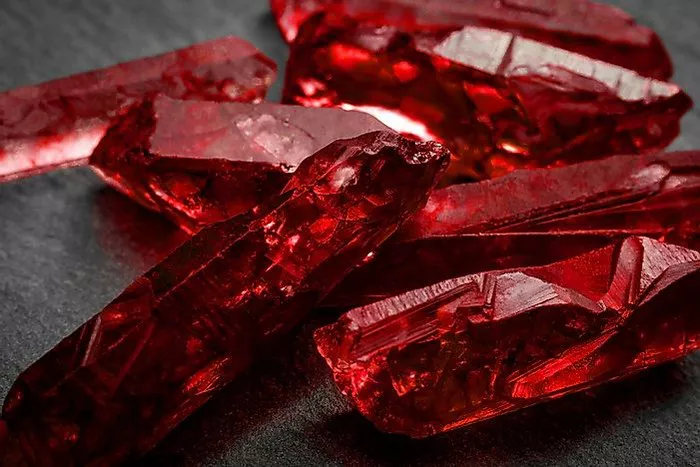Rubies, the majestic gemstones cherished for centuries, exhibit a captivating spectrum of hues. Among them, the purple red ruby reigns supreme. This distinguished variety showcases a range of colors, but the most esteemed specimens boast a pure, vibrant red to a subtly purplish-red hue. It is within this specific color range that the true rarity and value of rubies are unveiled.
Distinguished by its rich crimson tones with a hint of purple, the purple red ruby stands as a testament to nature’s exquisite artistry. These nuances in color are not merely aesthetic preferences but pivotal factors that significantly influence the value of each gem. Even slight deviations from the desired hue can profoundly impact a ruby’s worth in the discerning eyes of collectors and connoisseurs alike.
Historical Context:
The allure of purple red rubies is steeped in historical intrigue, with tales of their mesmerizing beauty spanning centuries. One such narrative is the historical use of the term “pigeon’s blood” to describe the quintessential red to slightly purplish or pinkish-red hue of rubies. This evocative term conjures images of purity and intensity, capturing the essence of these precious gems.
Yet, while such terms evoke romantic notions, they can also be subject to misinterpretation. The subjective nature of color perception, coupled with cultural nuances, underscores the complexities inherent in gemstone classification and appreciation.
Desirable Color:
At the pinnacle of ruby allure lies the ideal color: a resplendent shade of pure red with a subtle undertone of purple. This precise combination commands the highest prices in gem markets worldwide. The allure of the pure red ruby lies in its unparalleled brilliance and depth of color, captivating all who gaze upon it.
Conversely, overtones of orange or purple detract from a ruby’s desirability and diminish its value. These deviations from the coveted hue dilute the gem’s inherent beauty and allure, relegating it to a lesser status in the realm of precious stones. Thus, in the pursuit of perfection, collectors and enthusiasts seek out rubies that epitomize the pinnacle of red radiance.
Avoiding Extremes:
As with all things of beauty, balance is key, and the color of a ruby is no exception. It should neither be too dark nor too light, but rather a harmonious symphony of hues that captivates the beholder’s gaze. If the color veers too far into the depths of darkness, it may dim the stone’s brilliance, robbing it of its inherent allure. Conversely, if the color is too light, it risks being mistaken for a pink sapphire, relegating it to a category that, while still popular, pales in comparison to the allure of a true ruby.
Indeed, the distinction between rubies and pink sapphires is a nuanced one, fraught with intricacies that confound even the most seasoned of gemologists. While pink sapphires possess their own inherent beauty and charm, they exist as a separate entity within the realm of gemstones, distinct from the regal splendor of a true ruby.
Differentiating Ruby and Pink Sapphire:
The demarcation between ruby and pink sapphire has long been a topic of debate among gem enthusiasts and scholars. Cultural differences play a significant role in shaping interpretations of these distinctions, with varying standards observed in producing regions versus consuming markets.
To address this ambiguity, institutions like the Gemological Institute of America (GIA) employ rigorous standards and controlled comparison methods to determine a gemstone’s classification. By assessing factors such as dominant hue and saturation, gemologists can objectively differentiate between rubies and pink sapphires, providing clarity amidst the complexity of gemstone taxonomy.
Personal Preference:
Amidst the myriad considerations that define ruby excellence, personal preference remains paramount. Each individual’s perception of beauty is as unique as the gemstones themselves, shaped by personal experiences, cultural influences, and aesthetic sensibilities.
While some may gravitate towards the classic allure of a pure red ruby, others may find themselves drawn to the subtle complexities of a purplish-red hue. It is this diversity of preference that enriches the world of gemstone appreciation, inviting enthusiasts to explore the kaleidoscope of colors and discover the ruby that resonates most deeply with their soul.
Conclusion:
The purple red ruby stands as a testament to nature’s boundless creativity, captivating generations with its mesmerizing beauty and timeless allure. Within its crimson depths lies a spectrum of hues, each imbued with its own unique charm and character.
As we delve into the world of purple red rubies, we uncover not only a treasure trove of color and rarity but also a rich tapestry of history, culture, and personal preference. It is in the intersection of these elements that the true essence of the ruby is revealed, beckoning us to embrace its enchanting mystique and embark on a journey of discovery that transcends time and tradition.


